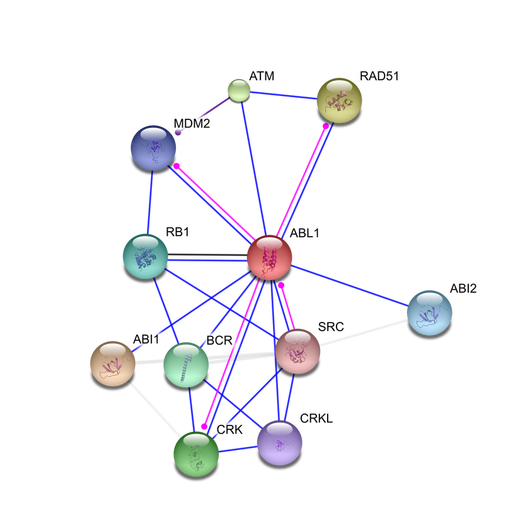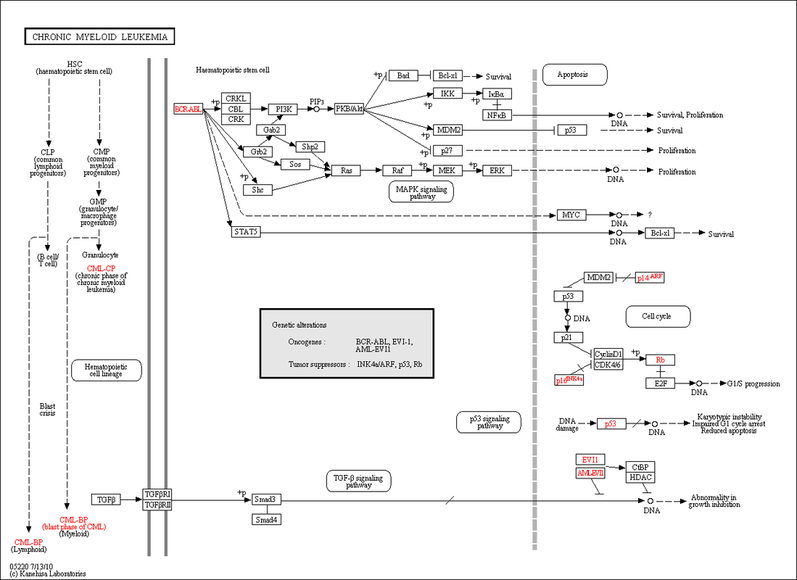This web page was produced as an assignment for Gen677 at UW-Madison Spring 2010
Protein Interactions
STRING and Osprey were used to determine the protein interactions of ABL1. Osprey found approximately 60 different protein interactions. STRING was used to find the more recent and most supported protein interactions. These interactions can be seen in the diagram below.
The role of some these proteins and other proteins not seen in the diagram above in the CML pathway can be viewed in the diagram below.
Analysis
The ABL1 protein interacts with numerous proteins that support its function as a regulator of cytoskeleton remodeling and DNA repair along with inducing apoptosis. Proteins from the gene ABI1 and ABI2 play roles in cell growth and cytoskeleton reorganization. They also play a role in the phosphorylation of other genes including ENAH and MENA. ABL1 directly phosphorylates CRKL and CRK, which may play a role in mediating transduction signals in the cell and in cell motility and phagocytosis of apoptotic cells, respectfully. Other proteins including RB1 and MDM2 need to be phosphorylated in order to help regulate the process of cell division and apoptosis. The ABL1 DNA repair function is also carried out by phosphorylating genes ATM and RAD51.
CML is associated with the development of the fusion gene BCR-ABL, which activates the tyrosine kinase. The fusion gene disrupts the normal function performed by the ABL1 protein. Disruption of this protein prevents the function performed by protein found to interact with ABL1. Without the regulation of the cell growth, cell division, and DNA repair, it is understandable how the formation of BCR-ABL can result in the proliferation of granulocytes.
CML is associated with the development of the fusion gene BCR-ABL, which activates the tyrosine kinase. The fusion gene disrupts the normal function performed by the ABL1 protein. Disruption of this protein prevents the function performed by protein found to interact with ABL1. Without the regulation of the cell growth, cell division, and DNA repair, it is understandable how the formation of BCR-ABL can result in the proliferation of granulocytes.
References
1. STRING http://string.embl.de/
2. Osprey http://biodata.mshri.on.ca/osprey/servlet/Index
3. Kegg http://www.genome.jp/kegg/pathway.html
2. Osprey http://biodata.mshri.on.ca/osprey/servlet/Index
3. Kegg http://www.genome.jp/kegg/pathway.html


